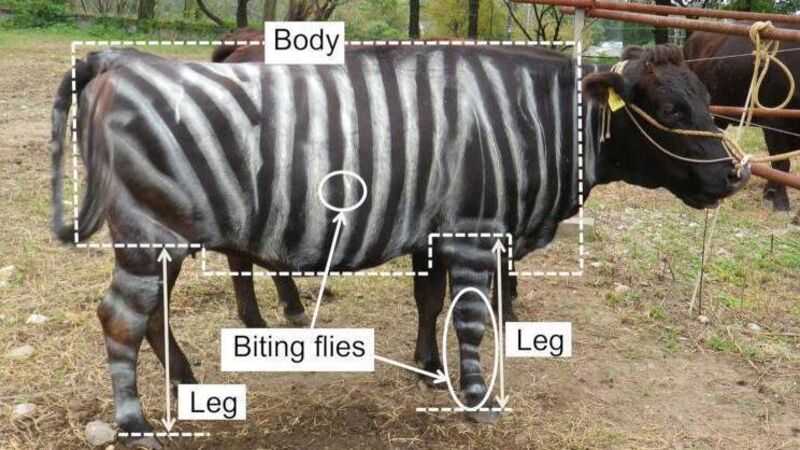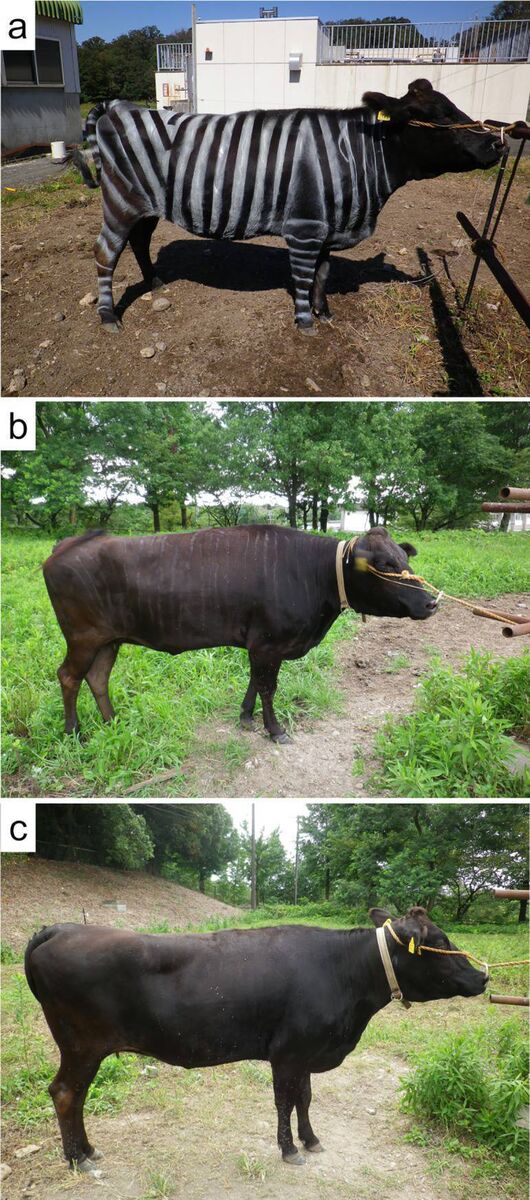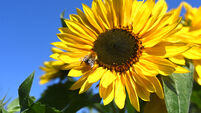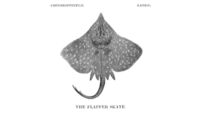Testing zebra stripes on cows — with some very positive results

Example of the area of legs and body used to count biting flies on cows
The Ig Nobel Prize was created in 1991. Organised by the humorous scientific magazine , it honours ‘achievements that first make people laugh and then make them think’. Winners receive a trillion-dollar Zimbabwean banknote... worth about half a euro.
This year’s award ceremony took place at Boston University. The biology prize went to Tomoki Kojima and his team, for a project on cows posing as zebras. "I couldn’t believe it," Kojima declared, on hearing that he had won the prestigious award: "I thought I was dreaming."
Why do zebras have white stripes on their black coats, zoologists ask?
A tiger’s stripes render this ambush predator virtually invisible in long grass. Zebra-like stripes make okapis, the ‘forest giraffes’, difficult to spot in the dark forests where they live. Zebras are creatures of the open savannah; their gaudy convict-style uniforms might seem to make them conspicuous. But they don’t.
Watching them converge on African watering holes, zebras are in fact very difficult to spot. Striped camouflage breaks up an animal’s profile. An attacking cheetah must focus on a single potential victim, if it is to run it down successfully. The shimmering fleeting stripes of a disturbed herd confuse a pursuit predator.
But is there more to striped plumage than camouflage?

A park-ranger once told me that the stripes are a bar-code, facilitating individual recognition. An expectant mother leaves the herd, and moves into long grass, to ‘drop’ her foal. She circles the new-born, he claimed, to imprint her identity on it, so that calf and mother can locate each other on re-joining the herd.
Stripes may provide air-conditioning. Black bodies take in heat, white ones reflect it. Air circulating between the warm black pelt and the cooler white stripes helps lower an animal’s temperature under the blistering African sun.
It has also been suggested that stripes repel insects. Flies can drive an animal mad. Cattle ‘throw’ their heads and lash out with their tails to drive away these tormentors. Energy is wasted, milk and beef yields fall. It’s no fun being a cow when flies are on the war-path.
Zebras seem to have solved the insect pest problem, at least partially. A biting fly seeks a large uniformly-coloured pelage. A striped black and white one confuses its navigation system — the insect can’t find a safe runway on which to land.
Kojima and his team decided to test this air-traffic control idea and, hopefully, suggest a less invasive, and more humane, way to protect cows than dosing them with harmful pesticides.
Six pregnant black cows were recruited for an experiment. They were tested in threes, one cow being painted with white stripes, another given black ones, and the third left unpainted. Successful landings by insects were recorded. The bovine guinea pigs were then washed down, swopped around and the procedure repeated.
The results showed that the number of insects landing on a striped cow was up to 50% lower than on a non-striped one. Painting also reduced the victim’s fly-swatting behaviour.
How would the Irish countryside look if our farmers were to dress up their cattle as zebras?








